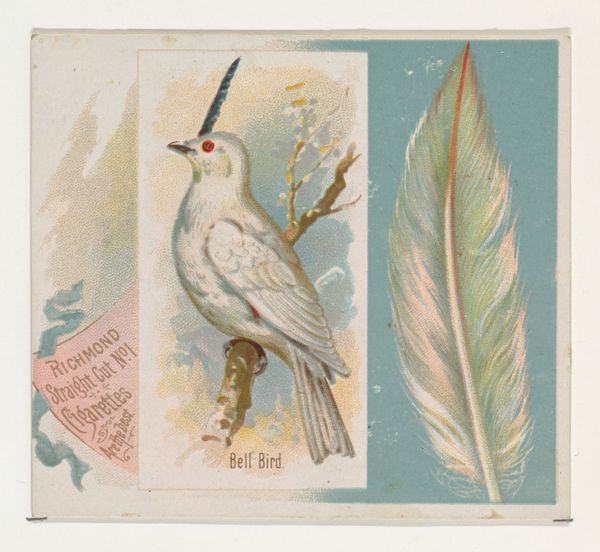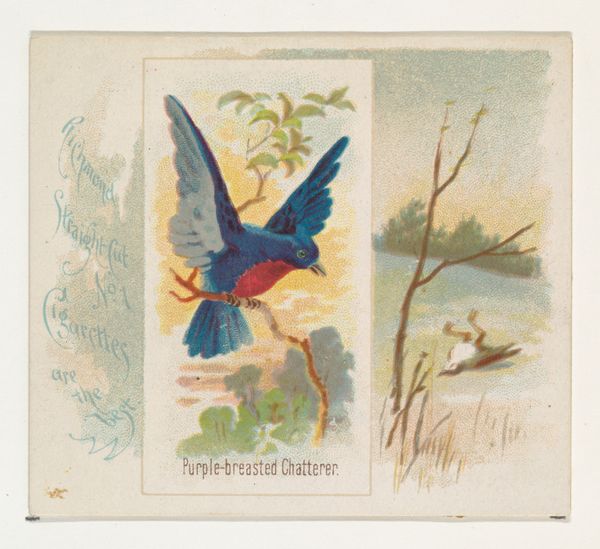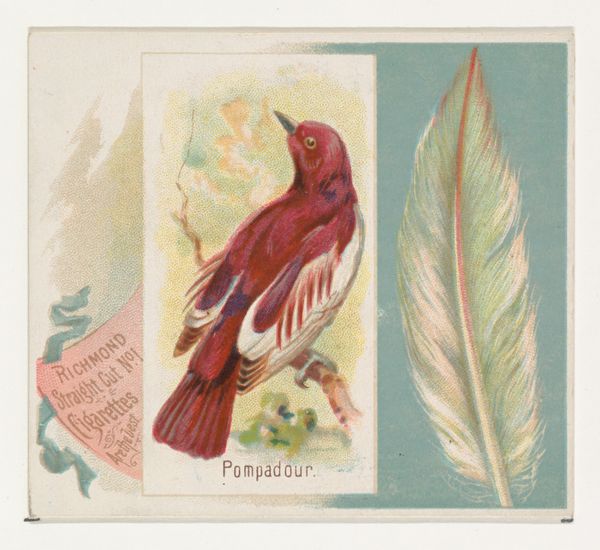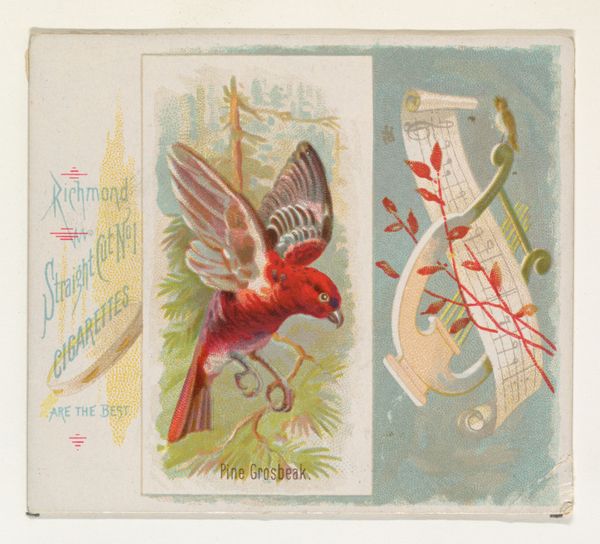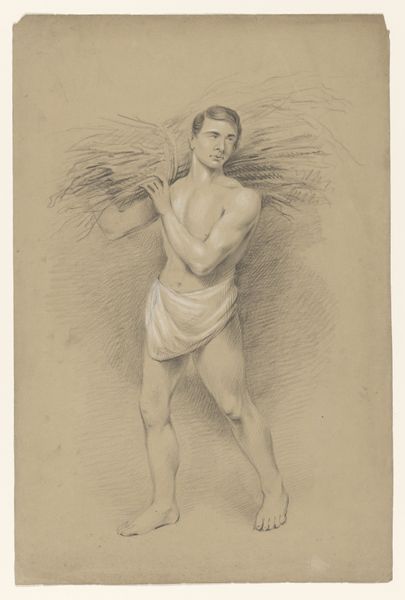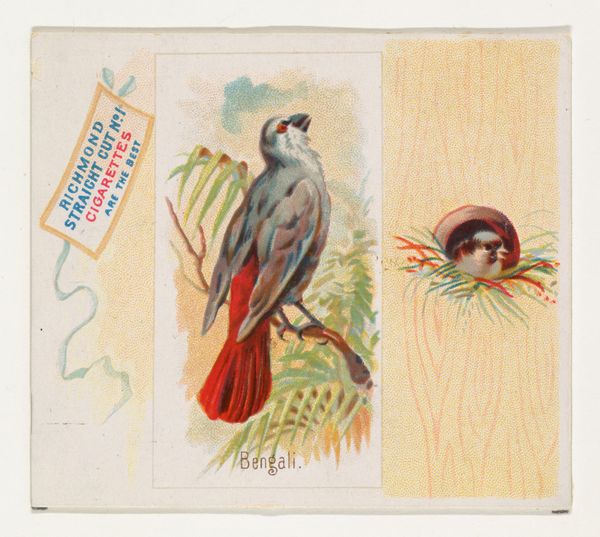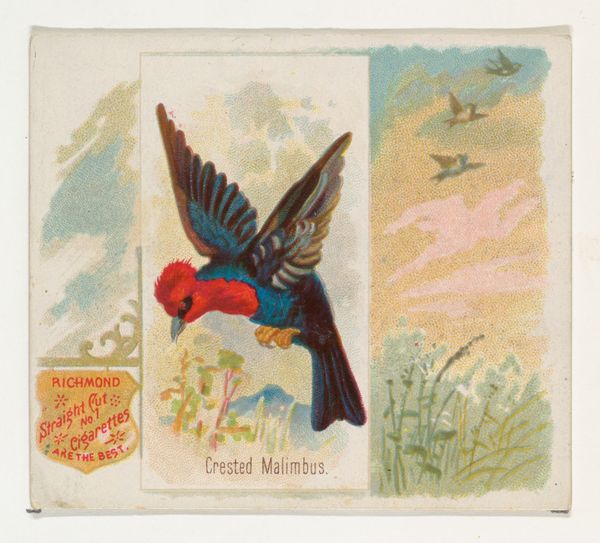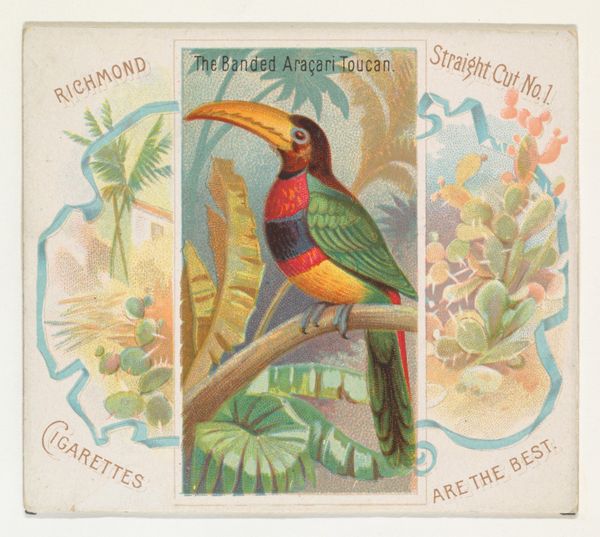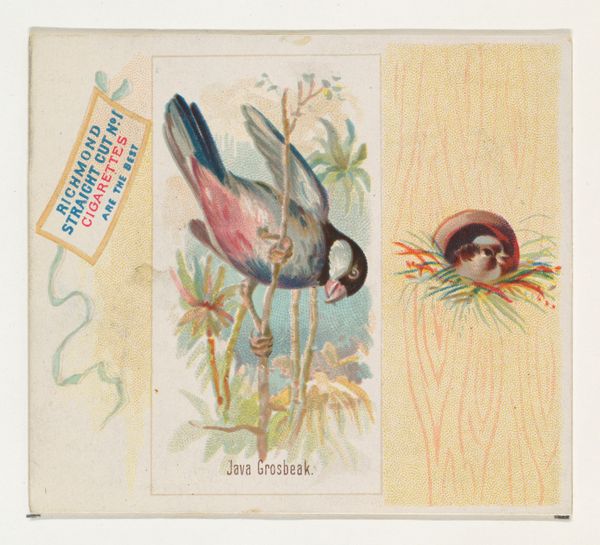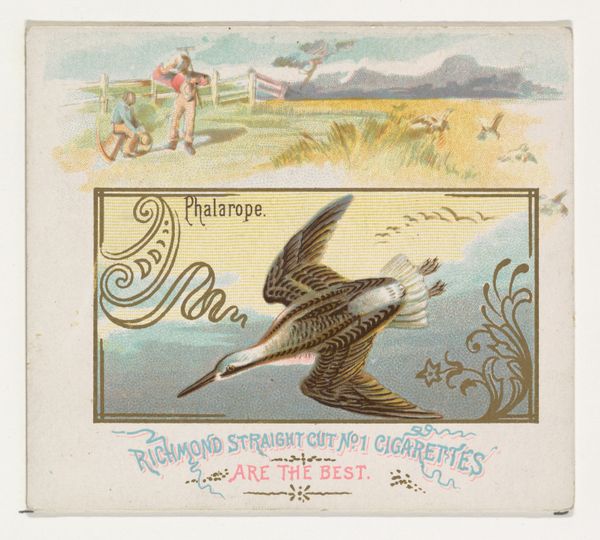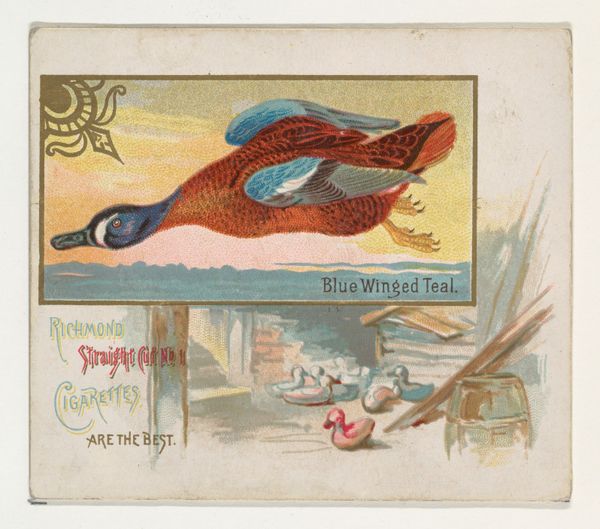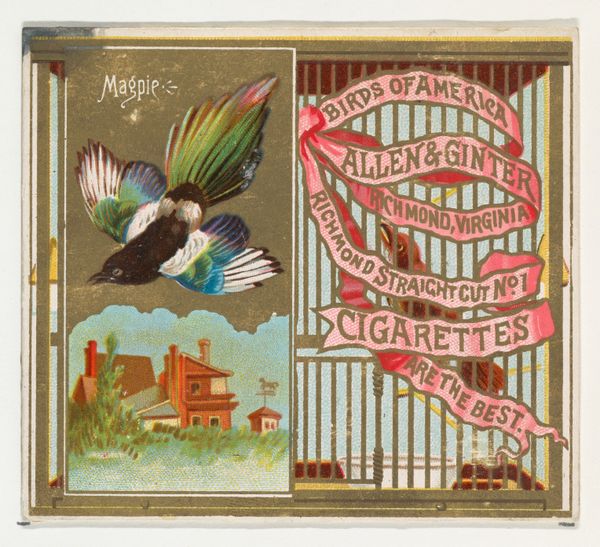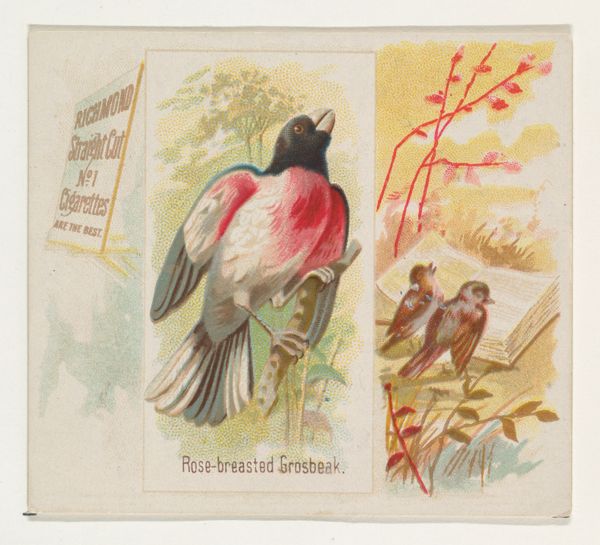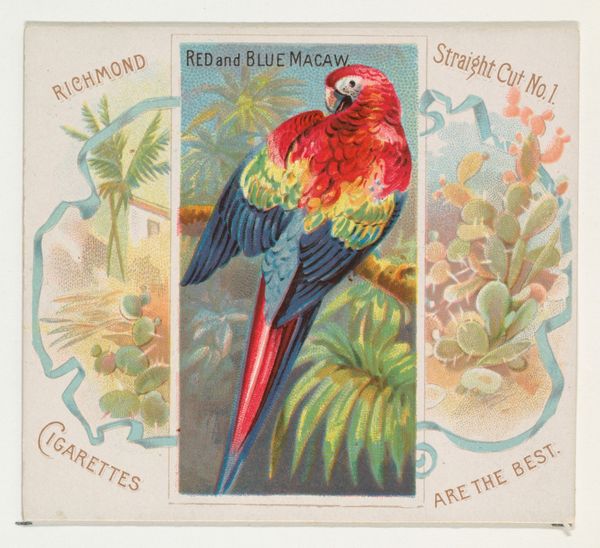
Patsey Duffy, Pugilist, from World's Champions, Second Series (N43) for Allen & Ginter Cigarettes 1888
0:00
0:00
drawing, coloured-pencil, print
#
portrait
#
drawing
#
coloured-pencil
# print
#
figuration
#
coloured pencil
#
genre-painting
#
realism
Dimensions: Sheet: 2 15/16 x 3 1/4 in. (7.4 x 8.3 cm)
Copyright: Public Domain
Editor: Here we have "Patsey Duffy, Pugilist," a color print made in 1888 by Allen & Ginter Cigarettes. I find the juxtaposition of Duffy’s serious portrait with the almost celebratory imagery next to him really striking. What’s your interpretation of this work? Curator: This print exists at a fascinating intersection of sport, nationalism, and commercialism, doesn't it? Think about the late 19th century – a period of rapid industrialization and growing consumer culture, coupled with anxieties around masculinity. Cigarette cards like these were not just advertisements but also functioned as a form of popular media, shaping ideas about who was considered a 'champion.' How do you read the imagery alongside Duffy's portrait in this context? Editor: Well, you have the American flag, some sort of trophy, and what I think are boxing gloves? It feels celebratory, maybe designed to create a sense of national pride linked to this particular athlete and, of course, the cigarettes. Curator: Exactly. Boxing, during this era, was evolving, with fighters like Duffy achieving a level of celebrity. The flag and the other trappings are less about Duffy, and more about how boxing, masculinity, and nationalism are becoming intertwined. These images work to assert a specific idea of American identity, even using sports figures. Editor: So it's not just about honoring the athlete, but about building a broader narrative about American ideals? Curator: Precisely. Consider who might have been excluded from this vision of American identity. Who is valorized here, and who isn't even considered? Duffy is presented as the epitome of physical strength and therefore American excellence, creating a narrative where boxing is tied to national pride and ideal manhood. The flip side, of course, is that we aren’t seeing representations of immigrant, working class, or Black fighters in the same way, which then feeds a national fantasy around power. Editor: That’s such an important point. I hadn't thought about how this seemingly simple portrait is really reinforcing larger cultural ideas about national identity and who gets to represent it. Curator: Art, even in something as commonplace as a cigarette card, participates in and shapes cultural narratives. Questioning these visual cues helps us unpack those stories.
Comments
No comments
Be the first to comment and join the conversation on the ultimate creative platform.
